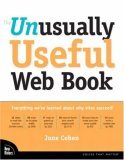My first exposure to the Internet was in 1995 when a friend of mine said, "this is soooo cool" and proceeded to summon a description for that night's episode of Friends. She was right- it was cool, but it also seemed horribly pointless. That information was both useless to me and, had I needed it, readily available in the newspaper and in TV commercials.
Of course, since then I've turned to the Internet for research on many occasions. In fact, being able to find the information I need at any time from my home proves quite useful.
Web 2.0 brings users to the forefront of this information hub by putting web content in the users hands.
A WTF (Where’s the Fire?) entry on Technorati explains Web 2.0 as being filled with user generated content. “[T]he owners of the website have simply provided a platform for us, the users to add content from our side,” it says. This brings a wealth of possibilities (and arguably junk) as you can find both facts and commentary on any given topic, provided you are able to discern the difference.
More than merely information on demand, the Internet has shifted to interaction on demand. Between MySpace, Second Life, World of Warcraft, and all variations thereof, users can find myriad ways to commune with others around the globe.
While this may have advantages, has it contributed to the demise of casual conversations in public spaces? After all, forward thinking elevators in Douglas Adams' The Restaurant at the End of the Universe eradicated "all the tedious chatting, relaxing and making friends that people were previously forced to do while waiting for elevators."
The full effects of the Internet on human interaction remain to be seen. It will certainly make for an interesting sociological study.
For more on Web 2.0:
Wikipedia entry
Video from Michael Wesch, Assistant Professor of Cultural Anthropology at Kansas State University
Saturday, February 17, 2007
Web 2.0: Information/Interaction On Demand
Posted by
S.M. Hutchins
at
5:33 PM
![]()
Labels: communication, interaction, Internet, society, web, Web 2.0
Subscribe to:
Post Comments (Atom)








0 comments:
Post a Comment